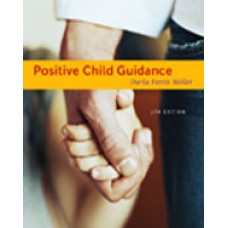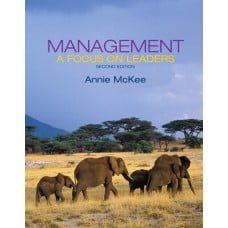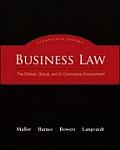Solution Manual for Positive Child Guidance, 7th Edition
$35.00 Original price was: $35.00.$26.50Current price is: $26.50.
Solution Manual for Positive Child Guidance, 7th Edition
Instant download Solution Manual for Positive Child Guidance, 7th Edition pdf docx epub after payment.

Product details:
- ISBN-10 : 1111833400
- ISBN-13 : 978-1111833404
- Author: Darla Ferris Miller
POSITIVE CHILD GUIDANCE, Seventh Edition, equips readers with information on how to guide, manage, and cope with the behavior of children. The book provides insight into children’s efforts to understand their own emerging needs and feelings while coping with adult expectations. The author outlines workable steps for creating a cooperative, respectful community of children and adults, with special emphasis on sensitivity to cultural needs, cultural differences, and developmentally appropriate practice. You’ll also find a range of practical, effective, and flexible guidance strategies based on principles of straightforward communication and assertiveness.
Table of contents:
Chapter 1 Introduction 1 Overview Child Rearing in Today's World 1 Why Parent and Professional Training in Child Guidance Is Important 2 Key Facts Who Should Be Responsible for the Well-being and Guidance of Children? 5 America's children Short-term Objectives for Child Guidance 7 What Are the Rights of Children? 8 How Do We Tell the Difference Between Enforcing Reasonable Safety Rules and Being Overprotective? 10 Why Should Children Be Involved in Maintaining and Protecting Their Environment? 11 Long-Term Goals for Child Guidance 12 The Nurturing Environment and Long-term Development 13 Points to Remember 15 Practical Application; The Spoiled Child; Myth or Reality? 16 Discussion Questions 16 Related Readings 17 Helpful Web Sites 22 Chapter 2 Understanding Children's Behavior 23 Typical Ages and Stages 23 How Does Guidance Changes to Match Development? Infants (Birth/12 Months) 26 Erik Erikson's Psychosocial Stages of Human Development Do Infants Intentionally Respond by Crying? 27 Can Babies Misbehave on Purpose? 27 What Are Reflex Responses, and What is Unconscious Conditioning? 29 What is Classical Conditioning? 29 What is Operant Conditioning? 29 What is Metacognition? 30 How Do Babies Develop Control of Their Actions? 30 Books for overwhelmed Parents Why Do Babies Cry? 32 How Does Trauma and Chronic Stress Affect the Infant's Brain Development? 33 How Babies Develop Trust 34 What Is Learned Helplessness? 34 How do I answer Parents' sleep Question? Which Is Best; Flexible Spontaneity or Predictable Routines? 37 Whar Are Interaction Styles? What Do We Mean by Secure Attachment to Caregivers? 38 Why Do Babies Cling? 40 Separation and Stranger Anxieties 40 How Do Babies Perceive Themselves and Their Surroundings? 41 Toddlers (12 Months to 3 Years) 43 Can Toddlers Control Their Feelings and Actions? 43 How Awareness of Cause and Effect Develops 44 Toddlers Need to Explore Their Surroundings 44 Safety Is a Major Issue in Toddler Care 44 The Kinds of Surroundings Toddlers Need 46 Can Toddlers Read Body Language? 46 How Verbal Communication Begins 48 What Kind of Language Experiences Are Good for Toddlers? 48 Stranger Anxiety 49 Separation Anxiety 49 How Can I Make Friends with a Shy Toddler? 49 Why Are Toddlers so Possessive? 50 Why Do Some Toddlers Become so Attached to Security Blankets, Pacifiers, and so Forth? 51 Why Are Toddlers Stubborn One Minute, Then Clingy the Next? 52 Are Toddlers Aware of Themselves? 53 Why Do Toddlers Get so Excited and Happy When They Imitate Each Other? 54 Preschoolers (3 to 5 Years) 55 Can Preschoolers Make Plans and Decisions? 55 Meeting Preschoolers Needs for Communication 57 Communicating Successfully with Preschoolers 57 Teaching Preschoolers to Use Words to Express Their Feelings 58 Friendships Are Important to Preschoolers 60 How Do Preschoolers Learn to Accept Responsibility? 61 Allow Preschoolers to do Things that Are Difficult 61 Helping Preschoolers Follow Rules 62 How Do Preschoolers Develop a Positive Sense of Self? 63 Should Children be Encouraged to Compete? 64 Early School-Agers (5 to 8 Years) 65 Why Early School-Agers Ask so Many Questions 65 Why Do They Get so Angry if They Do Not Always Win? 65 How Can I Earn the Respect of School-Agers? 66 Why Do Early School-Agers Resist Going to Child Care? 67 Why Do early School-Agers Get so Upset About Fairness? 67 Why Do They Insist on Picking Their Own Clothes? 68 How We Can Help Early School-Agers Become Productive? 69 How We Can Support Their Self-Esteem? 70 Older School-Agers (9 to 12 Years) 71 Why Do Older School-Aged Children Argue so Much? 71 How Can I Get Older School-Agers to Trust and Respect Me? 72 Why Do Older School-Agers Try so Hard to Be "Popular?" 72 Why Do Older School-Aged Children Love Pranks and Jokes? 73 How We Can Support Older School-Agers' Self-Esteem? 73 Points to Remember 74 Practical Application; "I'm Never Gonna 'Vite You to My Birth'ay!" 74 Discussion Questions 76 Related Readings 76 Helpful Web Sites 80 SERVING CULTURALLY DIVERSE CHILDREN AND FAMILIES _ Understanding the Dynamic Nature of Culture o What is ordinary culture? o Does everyone have culture? _ Understanding Children and Families in the Context of their Communities o How did Bronfenbrenner suggest visualizing a person's inner self? o What is unconditional acceptance? o What is ethical responsibility? _ Prejudice, Racism, and Discrimination o Where did prejudice come from? o When does discrimination begin in children? o What are other early signs of prejudice in young children? o What is multicultural education? o How can we teach young children to resist bias? _ How can I spot bias, stereotypes, and myths about underrepresented groups in books and other media? _ What things should I know so I can be more considerate to people from other cultures? o Are there some things I can easily do to help parents from other cultures feel more comfortable? o Will these tips keep me from ever culturally offending anyone? o Are there some things I can easily do to help children from other cultures feel more comfortable? o Welcome Children With Limited English _ How can I learn to be more culturally sensitive? o A short quiz to explore beliefs _ Cultural Differences o How Does Culture Affect Adults' Styles of Interaction? o How Does Culture Affect a Person's Learning Approach? o How Does Culture Affect Social Role Expectations? o Cultural Tendencies o How Does Culture Shape Our Use of Language? o How Does Culture Shape Our Intellectual Approach? o Components of Emotional-Social Intelligence Chapter 4 Understanding the Reasons for Problem Behavior 83 Defining Problem Behavior 83 What Do We Mean by Functional and Dysfunctional Behaviors? 85 The Adult-centered Definition of Misbehavior 86 The Child-centered Definition of Misbehavior 86 Stages of Moral Development in Young Children 87 How do Young Children Learn Right from Wrong? 90 TEMPERAMENT What is Temperament? How Do Infants Show Differences in Temperament? What Has Jerome Kagan's Research Taught Us About Temperament? How Can We Support the Spirited Child? Underlying Causes of Problem Behavior 94 Inappropriate Expectations 94 Misunderstood Expectations 95 Immature Self-control 96 Gleeful Abandon, Group Contagion 97 Boredom 99 Fatigue and Discomfort 100 Desire for Recognition 101 Discouragement 103 Frustration 104 Rebellion 106 Points to Remember 108 Practical Application; Is a "Really Good Spanking" Really Good? 108 Discussion Questions 108 Related Readings 108 Helpful Web Sites 112 Chapter 5 Guidelines for Effective Guidance 113 Ignore Mildly Annoying Behavior That Is neither Harmful nor Unfair 113 Focus Attention Elsewhere 114 Discreetly Redirect Slightly Inappropriate Behavior to More Positive Substitute Behavior 114 Assist the Child in Recognizing the General Effects of Positive Behaviors 115 Immediately Interrupt Behavior That Is Harmful or Unfair 117 Intervene as Firmly as Necessary But as Gently as Possible 117 Maintain Objectivity 119 Remove the Child from a Problem Situation 120 Assertively Shape Positive Behavior 122 Teach Ground Rules 123 Clarify Expectations 124 Maintain Consistency 125 Adapt Objects, Events, and Attitudes to Remove Possible Causes of Problem Behavior 127 Offer Assistance and Encouragement 128 Give Undivided Attention 128 Redirect Inappropriate Behavior Firmly and Respectfully 130 Clearly Express Appropriate Feelings 131 Explain the Potential Consequences of Unacceptable Behavior 131 Provide Persistent Follow-up, and Enforce Logical Consequences Firmly and Respectfully 132 Emphasize Unconditional Caring and Affection 133 Maintain and Express Confidence That a Problem Will Be Resolved 134 Protect the Child's Dignity and Privacy 134 Be Willing to Start Over to Forgive and Forget 135 Points to Remember 135 Practical Application; Will and the Cream Cheese Won Ton 135 Discussion Questions 136 Related Readings 136 Helpful Web Sites 138 Chapter 6 Planning the Prosocial Environment 139 Prosocial Behavior 139 Setting the Stage for Appropriate Behavior 140 How Can the Physical Environment Support Prosocial Behavior? 140 What Are Ineffective Child Care Environments Like? 141 Recognizing a Developmentally Appropriate Environment 141 What Effect Does the Environment Have on Child Guidance? 143 How Do Schedules Support Positive Behavior? 144 The Nurturing Social Environment 144 How Relaxed, Playful Environments Encourage Prosocial Behavior 145 Creating a Cooperative Setting 146 Developmentally Appropriate Activities, Materials, and Routines 147 Why Consistency Is so Important 147 How Can I Support Cooperativeness? 148 The Nurturing Adult 149 How Can I Be More Nurturing and Patient? 149 What's Wrong With Spanking? Why Do People Spank? How Does a Nurturing Adult Respond to Aggression? 151 Can Children Learn Appropriate Behavior through Imitation? 152 How Can I Be More Attentive to Children's Individual Needs? 154 How Can I Provide Affirmation, Affection, and Acceptance? 155 How Can I Provide Positive Recognition and Encouragement? 157 Am I Willing to Enforce Rules Even if It Would Be Easier to Look the Other Way? 158 Am I Willing to Protect Individual Rights? 158 Points to Remember 159 Practical Application; William and the Nature Walk 160 Discussion Questions 161 Related Readings 161 Helpful Web Sites 165 Chapter 7 Positive Communication 167 Building a Foundation for Positive Communication 167 When Does Communication Begin? 167 How Adults Can Assist the Development of Early Communication Skills in Infants 168 What Are Typical Characteristics of Early Communication? 169 Why Positive, Mutual Communication Is Important for Child Guidance 169 How Attentive Listening Can Nurture the Child's Developing Sense of Self 171 Three Basic Human Needs Underlying Requests for Help 172 Are These Listening and Helping Strategies Only Appropriate for Use with Young Children? 172 Appropriate Responses to Requests for Action or Information 173 Appropriate Responses to Requests for Understanding and Attention 176 How Should Caregivers Respond to Requests for Dependency or Inappropriate Interaction? 178 Are Listening and Helping Strategies Relevant to the Care of Babies and Toddlers? 181 Addressing Underlying Feelings 181 When and How Should Adults Express Their Feelings to Children? 182 How Can Children Be Helped to Understand Their Feelings? 184 How Can Children Be Helped to Confront Troublesome Feelings? 184 Positive Instructions Versus Negative Commands 185 Characteristics of Assertive Communication 187 Key Factors in Assertive Communication 187 Characteristics of Nonproductive Communication 190 How Do People Behaving Like These Stereotypes Respond to Problem Situations Involving Children and Adults? 190 If These Stereotypical Communication Styles Are Ineffective, What Will Work? 192 Managing the Positive Confrontation 192 When Is Confrontation Appropriate? 192 How Confrontations with Children Can Be Made Positive and Assertive 193 How Attention Can Be Kept Focused on Confronting the Issues at Hand 194 How Children Can Be Taught Responsibility 194 Points to Remember 195 Practical Application; "I'll Leave You Here Forever" 195 Discussion Questions 196 Related Readings 196 Helpful Web Sites 197 Chapter 8 Nonverbal Cues and Appropriate Consequences 199 Nonverbal Cues and Body Language 199 What Is the Significance of Nonverbal Cues for Young Children? 199 Why Should Nonverbal Cues be Consistent with Verbal Communication? 200 Focus Attention at the Child's Eye Level 201 What Is Conflict Resolution Helping Children Resolve Problems Independently 202 Help Children Learn to Use Words to Express Themselves to Each Other 203 Should We Force Children to Apologize? 204 How Can We Encourage Voluntary Sharing? 205 How Can We Recognize and Encourage Internal Control? 206 _ How Does American Sign Language Support Positive Child Guidance? _ Can sign language help bridge communication barriers when English is not the primary language? _ What are some basic ASL guidance phrases I need to learn? Logical and Natural Consequences 206 Should Children Be Rescued from the Consequences of Their Actions? 206 What is the Difference Between Punishment and Guidance? 207 What NAEYC Says About Time-Out... What Head Start Says About Time-Out... Use ''Time-Away'' Rather Than Time-Out How Can I Be Firm without Seeming Angry? 210 Avoid Overindulging and Overprotecting Children 212 Help Children Learn to Make Choices within Limits 213 External Reinforcement 214 External Conditions that Support Appropriate Behavior 214 What is Behavior Modification and How Should It Be Used? 215 Why Behavior Modification Does Not Work All the Time 216 Points to Remember 217 Practical Application; The Big Boys and the Very Muddy Day 218 Discussion Questions 219 Related Readings 220 Helpful Web Sites 221 Chapter 9 Addressing Persistent, Unproductive Patterns of Behavior 223 Reacting to Needs; Maslow's Hierarchy 223 What is the Role of Self-esteem in Repeated Misbehavior? 224 How Can I Support the Child's Development of Self-esteem? 225 The No-Lose Method of Conflict Resolution 226 Dreikurs' Mistaken Goals 227 Attention-seeking Behavior 229 Clinging, Feigning Ineptness 229 Artificial Charm, Competitiveness 230 Clowning, Acting Out, Silliness 230 Laziness, Compulsiveness, Obnoxiousness 231 Controlling Behavior 232 Manipulativeness, Vengefulness 232 Pouting, Stubbornness 232 Bullying, Rebelling 233 Be Alert---Stop Bullying! Disruptive Behavior 236 Destructiveness, Aggressiveness 236 Contempt, Mistrust 237 Fits of Anger, Tantrums, Defiance 238 Withdrawn, Passive Behavior 239 Cyclical Self-stimulation 239 Rejection of Social Interchange 239 Internalization of Stress 239 Display of Ineptness and Hopelessness 240 Screening for Developmental "Red Flags" 240 Can Hearing Problems Affect Behavior? 241 Other Physical Conditions that Affect Behavior 241 Can the Presence of Behavioral Problems Signal the Possibility of Child Abuse or Neglect? 241 CHILD ABUSE FATALITIES Consequences of Maltreatment Locating Community Resources 243 Meeting Adult Needs 244 Points to Remember 245 Practical Application; "Thank Heaven for Sarah" 246 Discussion Questions 247 Related Readings 248 Helpful Web Sites 252 Chapter 10 Taking a New Look at Children 255 Identifying Personal Biases 255 Responding More Objectively to Individual Children 256 The Observation Sequence 258 How Observation Supports Positive Guidance 258 What Do I Need to Get Started? 259 How Will I Use My Observations? 259 How Does My Observation Become a Plan? 260 What if My Plan Does Not Work? 260 How Can I Be Sure My Plan Is Working? 261 Observation Strategies 261 What Is an Anecdotal Record? 261 What Is a Running Account? 262 What Is Time Sampling? 263 What Is Event Sampling? 265 Which Method of Recording Observations Works Best? 265 Points to Remember 266 Practical Application; The Mysterious Case of the Spinning Peg 266 Discussion Questions 267 Related Readings 267 Helpful Web Sites 268 Chapter 11 Historical and Cultural Beliefs about child Guidance 271 Historical Perspectives and Guidance Theories 271 How the Modern World Has Influenced Thinking About Child Guidance 273 The Child in Society 277 How Life Is Different for Contemporary Children in Today's Changing World 278 Preparation for Participation in a Democracy 279 How Early Influences Affect Children's Growth and Development in Terms of Their Learning Appropriate Behavior 280 The Strain of Changing Disciplinary Traditions 281 Cultural Influences on Child Guidance 282 Preparing Children for the Realities of an Adult World 284 How Do Young Children Learn about Their Role in the World? 285 When Does Cultural Learning Begin? 288 Parent Expectations Related to Social and Economic Settings 289 Understanding Cultural Differences 292 Philosophies of Guidance 295 Is a Child's Personality Mostly the Result of Nature or Nurture? 296 What Do Current Experts Say about the Origin of Intelligence and Personality? 297 The Nature Versus Nurture Controversy 297 If There Are Different Views about How Children Develop, How Do I Know which Philosophy Is Right? 301 Points to Remember 303 Practical Application; Bringing Home a Baby Bumblebee 303 Discussion Questions 304 Related Readings 304 Helpful Web Sites 308 Appendices A Children's Books Addressing Values and Feelings 311 B Resources for Responding to Special Needs and Interests 323 331 Glossary 335 References 339 Index 359
Library of Congress Subject Headings for this publication:
Child rearing — United States.
Child development — United States.
Child psychology — United States.
Parenting — United States.
People also search:
Positive Child Guidance, 7th Edition
Positive Child Guidance, 7th Edition pdf
Positive Child Guidance
what are the abcds of positive child guidance
|
what is positive guidance in early childhood
|
Related products
Solution Manual
Solution Manual for Introduction to Electrodynamics, 4/E 4th
Solution Manual
Solution Manual
Solution Manual
Understanding Business Nickels 10th Edition Solutions Manual
Solution Manual
Solution Manual
International Business Competing in the Global Marketplace Hill 10th Edition Solutions Manual
Solution Manual
Management Information Systems Managing the Digital Firm Laudon 14th Edition Solutions Manual











